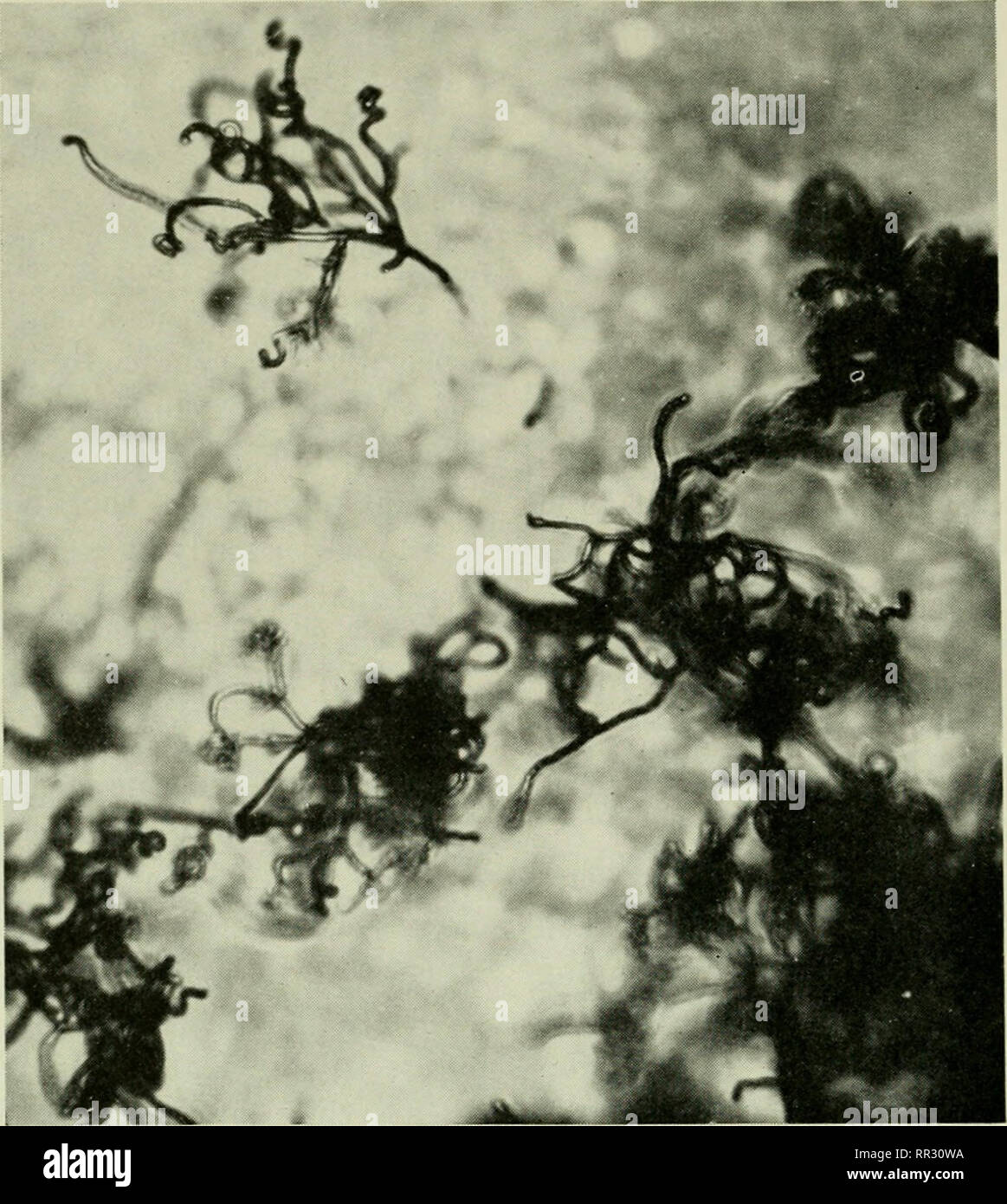. The actinomycetes. Actinomycetales. 54 THE ACTIXOMYCETES, Vol. I. Figure 23. S. fradiae, another spiral producing organism. that the actiiiomycetes should be classified with the bacteria, under the Schizomycetes. No wonder that Afanassiev suggested in 1889 that the filament of an actinomycete is a gigantically elongated bacterial cell. Among the other earlier investigators, the following considered actinomycetes as bac- teria: Cohn, Bostroem, Wolff and Israel, Berestnew, and Lieske. ^^arious subsequent investigators emphasized the particular re- lationship of certain actinomycetes, notably t

Image details
Contributor:
Library Book Collection / Alamy Stock PhotoImage ID:
RR30WAFile size:
7.1 MB (435.6 KB Compressed download)Releases:
Model - no | Property - noDo I need a release?Dimensions:
1495 x 1671 px | 25.3 x 28.3 cm | 10 x 11.1 inches | 150dpiMore information:
This image is a public domain image, which means either that copyright has expired in the image or the copyright holder has waived their copyright. Alamy charges you a fee for access to the high resolution copy of the image.
This image could have imperfections as it’s either historical or reportage.
. The actinomycetes. Actinomycetales. 54 THE ACTIXOMYCETES, Vol. I. Figure 23. S. fradiae, another spiral producing organism. that the actiiiomycetes should be classified with the bacteria, under the Schizomycetes. No wonder that Afanassiev suggested in 1889 that the filament of an actinomycete is a gigantically elongated bacterial cell. Among the other earlier investigators, the following considered actinomycetes as bac- teria: Cohn, Bostroem, Wolff and Israel, Berestnew, and Lieske. ^^arious subsequent investigators emphasized the particular re- lationship of certain actinomycetes, notably the Nocardia group, to the mycobacteria. Grootten, for example, (19:U) analyzed the relationship between the actinomycetes and the hyphomycetes, on the one hand, and the bacteria, on the other. He emphasized that the fact that actinomycetes are often branched does not justify in itself their clas- sification with the fungi, since certain bac- teria {MycobacU-rium, Corynebactcrium, etc.) can, under certain conditions, give branching forms. Further, the cytological structure of the actinomycetes, characterized by the ab- sence of well-defined morphological nuclei, definitely places them with the bacteria. He concluded that the Actinomycetales are closely related to the Mycobacteriales, as characterized by the evidence of bacillary and filamentous forms taking the Gram stain, sometimes by acid resistance, and by capability of branching. Relationship to Jnngi. The relation of the actinomycetes to fungi, especially the Fungi Imperfect!, was based upon the following similarities: 1. The production and maimer of branch- ing of the aerial mycelium and the manner of spore formation, especially in the genera Strcptotnyces, Micromonospora, Walsmania.. Please note that these images are extracted from scanned page images that may have been digitally enhanced for readability - coloration and appearance of these illustrations may not perfectly resemble the original work.. Waksman, Selman A. (S